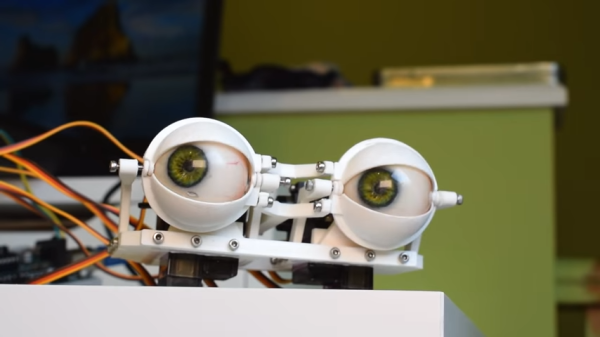Carving pumpkins by hand is hot, sweaty, messy work, and a great way to slice your way into a critical artery. Why not let a water jet do it for you? It’ll be cleaner and more precise to boot, and [Jo_Journey] is here to show us how.

Obviously, you’ll need a water jet machine, there’s no getting around that. You’ll also still have to do the basic preparation of the pumpkin yourself—cutting a porthole into the top and mucking it out is your job. With that done, you must then mount the pumpkin on two metal rods which will be used to mount it in the water jet machine’s working area.
You can then create a vector file of your design, and use your chosen software to generate the G-code to run the water jet. [Jo_Journey] uses Scribe, and recommends cutting at a speed of around 200 in/min at low pressure. Remember, it’s pumpkin you’re cutting, not high-strength steel.
There is some inaccuracy, of course—your pumpkin’s surface is not a flat plane, after all—but the results are good enough for most Halloween-related purposes. Even despite the geometrical issues, though, [Jo_Journey] shows us that you can get pleasantly sharp edges on your design. That’s very hard to achieve by hand!
We do love a good holiday hack around these parts, even if it’s out of season. If you’ve been cooking up your own pumpkinous plans, don’t hesitate to let us know! Earlier is sometimes better—after all, who has time to hack together a project if you’ve just read about it on October 29?





 The program is known as TwinkleFOX, and relies on the popular
The program is known as TwinkleFOX, and relies on the popular 













